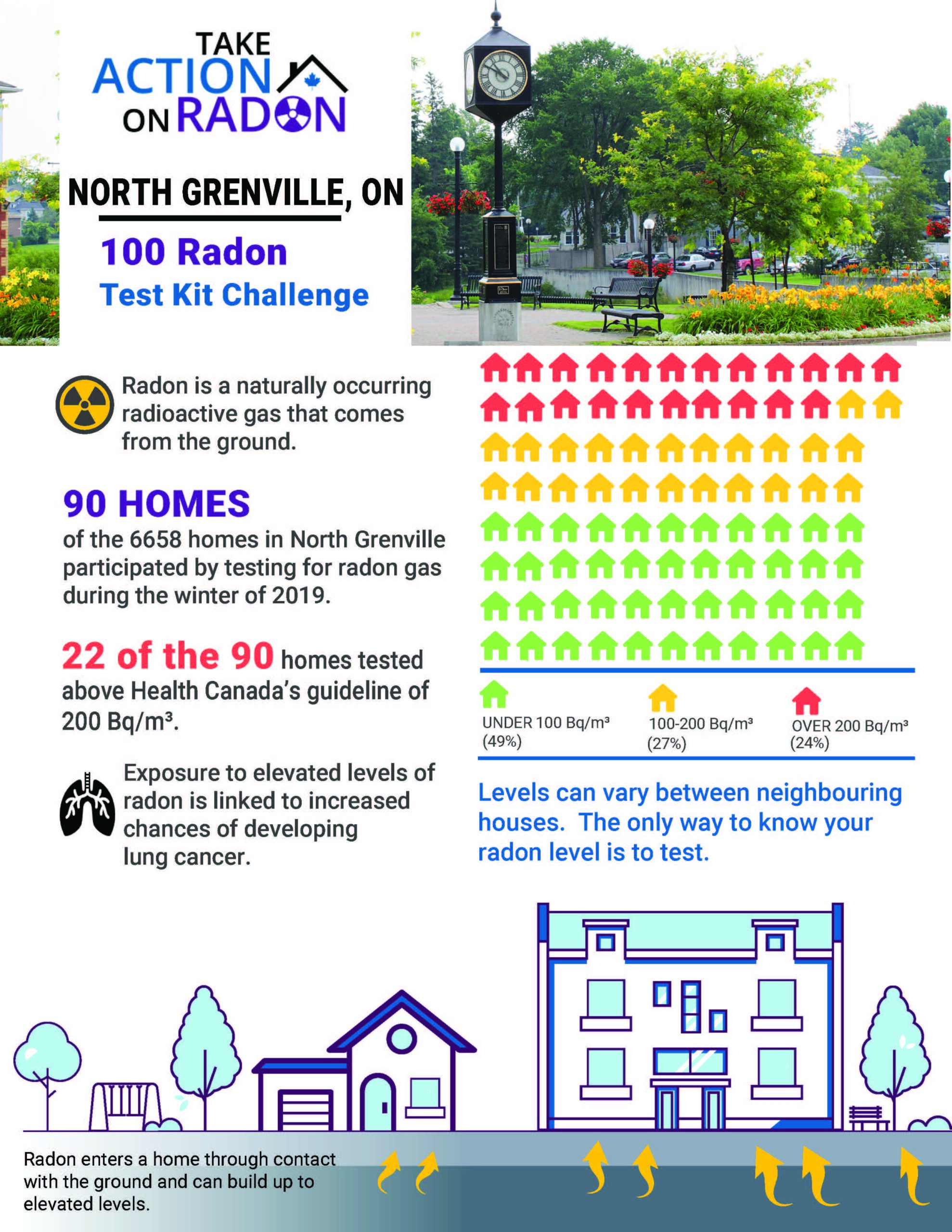by Take Action on Radon
Twenty-four percent of North Grenville residents who tested their home for radon as part of the 100 Radon Test Kit Challenge, learned their homes were above Health Canada’s safe radon level. A further 27 percent of homeowners learned their houses had radon gas levels that were close to exceeding the recommended safe zone — a clear warning for residents to take action on radon.
Take Action on Radon is a national initiative, funded by Health Canada, to bring together radon stakeholders and raise awareness on radon across Canada. The current advisory team is made up of the Canadian Association of Radon Scientists and Tech- nologists (CARST), CAREX Canada, and the Canadian Cancer Society.
The success of this initiative hinges on the participation and dedication of hundreds of radon stakeholders coast to coast. From radon professionals and community champions to radon researchers, public health officials, and programs at the municipal, provincial, and federal levels: radon awareness is a team effort.
The newly released Take Action on Radon North Grenville Community Report studied 90 residents who tested their home for radon during the winter of 2019 as part of the 100 Radon Test Kit Challenge.
North Grenville was one of 15 communities that participated in the initiative and collected important information about radon levels across the country. Now in its third year, the 100 Radon Test Kit Challenge has spurred more than 2,000 Canadians to test their homes for radon.
“Radon is a bit like COVID-19. The only way to know if you have it is by testing,” says Pierre Dubois who was recently diagnosed with lung cancer. “My wife and I thought we were safe in our quiet neighbourhood, but we weren’t. After testing, we discovered very high levels of radon in our home. I wish I had known the risks 10 years ago when we bought the house. Now, my only hope is that my wife’s health hasn’t been compromised as well.” The 2019 Radon Community Reports show that radon levels can vary considerably within communities.
Radon is a naturally occurring and radioactive gas. It is the leading cause of lung cancer in non-smokers. It is present in the air and can accumulate in high concentrations in homes. Long-term exposure to high levels of radon leads to an increased risk of lung cancer. Because radon levels can vary between houses, the only way for homeowners to determine their home’s radon level is to test for it.
Canadians wishing to learn more about radon and how to protect their health are encouraged to visit www.TakeActiononRadon.ca, and attend an interactive webinar with radon experts on November 19 at 1 pm EST. To submit your questions and register, go to: https://takeactiononradon






